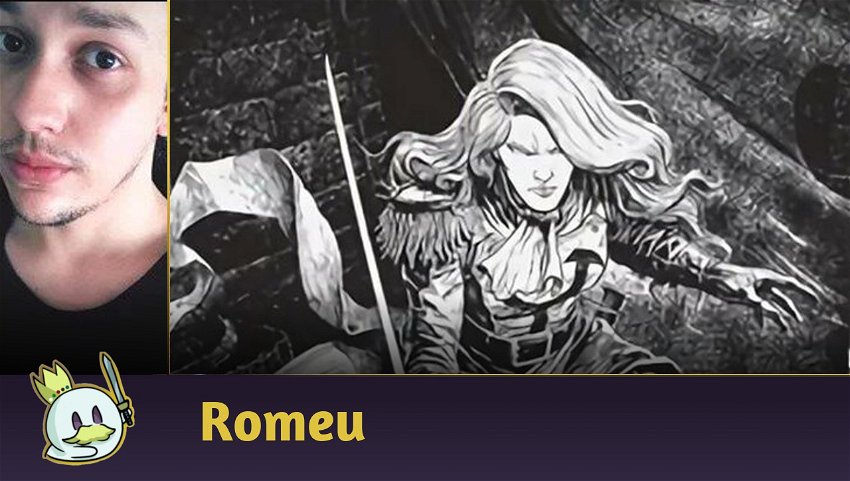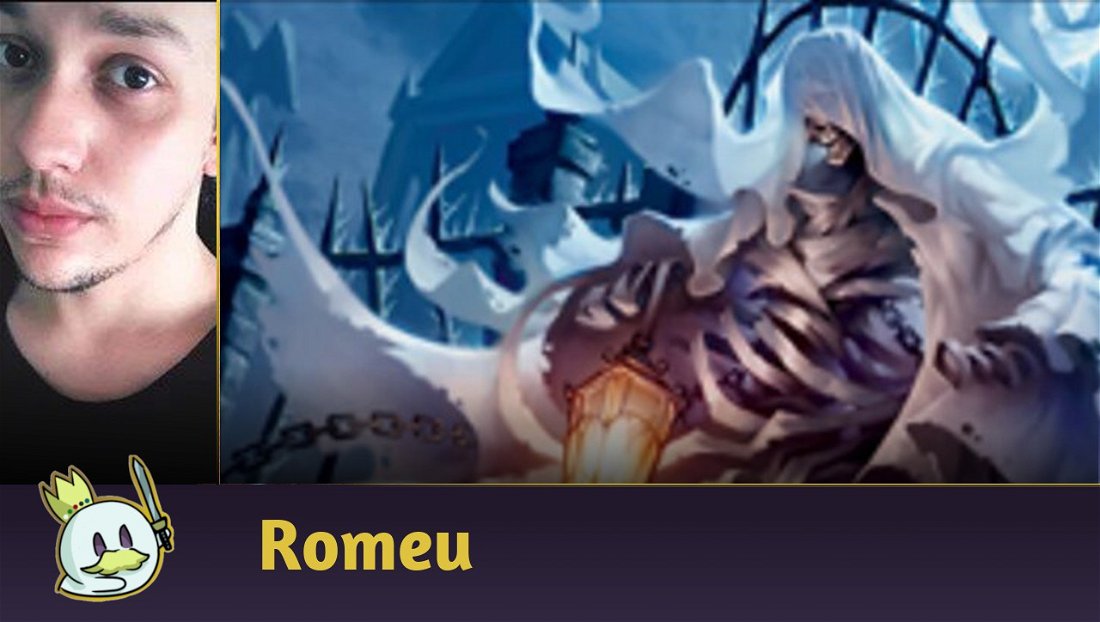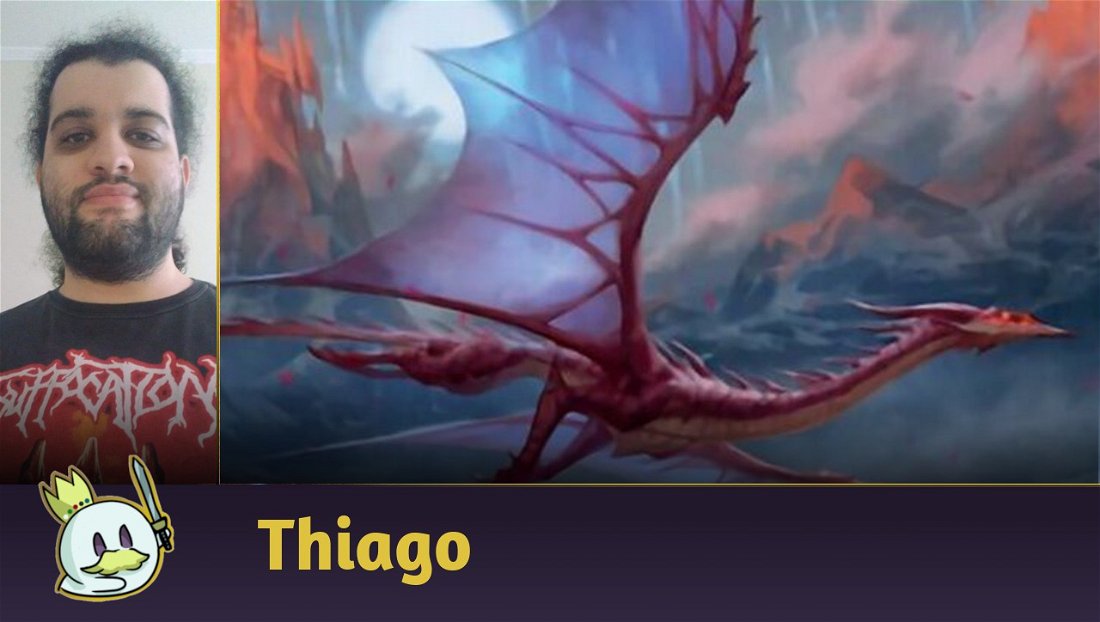Closing my review cycle for competitive formats, today we'll be covering the new set, Innistrad: Crimson Vow with a focus on Legacy!
Different from what I did for Pauper and for Pioneer
, given the high power level Legacy has, I will only mention my Top 5 cards that may have some potential or usefulness for the format, along with some honorable mentions that have peculiar or interesting effects.
Ad
But before we get into this topic, we first need to understand the moment that Legacy is living.
Legacy's Current State and Bannings
As in other competitive formats, I believe that this subject demands a separate article analyzing the situation, rather than just a note in a review.
However, I also believe in the need to contextualize the format today for readers, especially those interested in Legacy but were away from the format during the pandemic, or for players who like to follow it but don't actively play it.
And being pretty straightforward, Legacy isn't in a very healthy state right now, and a lot is due to how Modern Horizons II brought to Delver decks a mighty package that adds too much redundancy and consistency to the archetype:

These cards, along with Expressive Iteration, have made the format's Izzet or URx decks far above the rest of the Metagame, to the point that Delver of Secrets is no longer a must-have staple of these archetypes, and I explain better how this happened and why the card has seen less and less play in this article.
There is a consensus that something needs to be done to rebalance the format: Many believe Ragavan, Nimble Pilferer needs to be banned as it creates extremely unfun game patterns, but that this won't be enough to make "Delver" decks become less prevalent, and from there, there is a lot of disagreement between which other cards need to depart to balance the format, ranging from banning the entire package received in Modern Horizons II to Expressive Iteration and even Daze.

One of the most common ban arguments today includes one of the free spells that function as a pillar for Tempo decks for over fifteen years, and the main arguments include that Daze is a spell that, unlike Force of Will or Force of Negation, has as its main purpose to delay the fair decks, and that with the addition of super-efficient creatures recently, the Tempo advantage offered by the free spell becomes much more impactful than it used to be when your objective was just to attack with a 3/2 creature.
There is still concern that, by “nerfing” Delver decks, the format might become polarized around Bant Control, which also received great additions with Modern Horizons II and is one of the archetypes that achieves many good results in competitive tournaments.

As for my short opinion, I believe Ragavan should be banned. The card was interesting, fun, innovative and opened up new possibilities for the format when it first came out, but today, it standardizes Legacy in a detrimental way, and games where you start with it and ways to protect it are great when the format is extremely geared towards blue-based decks.
I don't think it will be enough to "balance" the format, and that banning another older card, or other Modern Horizons II inclusions is necessary, but having a one-drop that is a threat that needs to be answered any cost as it offers a significant amount of card advantage and mana advantage is not healthy, and we've known that since Deathrite Shaman.
Ad
Honorable Mentions

Thalia would be my Top 1 card, but since she's a reprint, I won't include her on the list.
The reprint of Thalia, Guardian of Thraben may have disappointed some players who were hoping for a new version of the card that could get into the format and, honestly, I was also expecting a new Thalia coming out as Mythic-Rare and being a major staple in eternal formats.
However, this reprint is a huge favor to formats that didn't have access to it yet, such as Pioneer and Standard, and her new illustration is much more themed than Dark Ascencion's.

Is a 3/3 blue creature for one mana still good?
I believe the lack of evasion and the limitation of exiling only creature cards makes Cobbled Lancer a bad choice for Legacy these days, but given the history that 3/3 creatures for one mana have in the format, I'm giving it an honorable mention.

There was a time when Reanimator decks used Tidespout Tyrant on the Sideboard, and although Hullbreaker Horror doesn't return lands to the opponent's hand, it does have a powerful Unsubstantiate effect, which can make it an easier threat to protect yourself if one day the archetype needs this creature category again.

If black decks need it, Path of Peril is a great card to deal with the many low-cost creatures the format has, as it essentially destroys all Elves creatures and a vast majority of the threats from archetypes like Delver and Death & Taxes.
However, Path of Peril competes with Toxic Deluge, which is more efficient at dealing with larger creatures, and has a much more splashy mana cost than the new addition.

Blazing Volley occasionally appears on the Sideboard of decks like Izzet Delver, among others, to deal with Elves and other archetypes with plenty of X/1s like Death and Taxes.
End the Festivities is a direct upgrade to the card, dealing a relevant 1 point of damage to the opponent while clearing the battlefield of X/1 creatures.
Currently, effects like Blazing Volley and Forked Bolt have not been widely played, but I believe End the Festivities replaces both options.
The Top 5
With the end of the Honorable Mentions, let's get into Innistrad: Crimson Vow's five most interesting cards for Legacy!
Savior of Ollenbock

It's not very difficult to train Savior of Ollenbock once or twice with Death and Taxes, especially in the Yorion, Sky Nomad versions, making it easily a 2-for-1, or better, that can be tutored with Recruiter of the Guard.
The fact that it also exiles creatures from the graveyard can have some use for returning some of your dead creatures, and it's also possible to use it to exile your creatures on the board, which can be relevant in certain occasions.
It's possible that it's worth a one-of slot on the Yorion versions of the archetype.
Ad
Stormchaser Drake

I don't know if there are ways to efficiently abuse Stormchaser Drake in Legacy, but its effect is unique enough to deserve a mention in this article.
Basically, if you can protect Stormchaser Drake, you can use it as a powerful draw engine as long as you have mana and ways to cast spells that target the creature, which can be repurposed with effects that also draw cards when played, such as Expedite.
To be quite honest, I think I'm going too much "Pauper" for Legacy, but Stormchaser Drake has enough potential to be mentioned in this article, even if it just ends up creating a bad casual deck.
Cemetery Gatekeeper

The new vampire isn't necessarily an Eidolon of the Great Revel variant, and if decks like Burn need more cards like this, Pyrostatic Pillar is more efficient at dealing recurrent damage, and there aren't many advantages in using it to exile a land at early-game, since Legacy is a format where players can play well with only a few lands, and the opponent can always use a removal before making their land drops.
So, in my perspective, the best target for Cemetery Gatekeeper to make it a punitive effect will probably be Instants and Sorceries, as it will force the opponent to spend some life to remove it, or to find the removal with cantrips, while the 2/1 body with First Strike has some advantages in combat, especially in the current Metagame, where some of the most used creatures are X/1 or X/2.
Reckless Impulse

Reckless Impulse is in a strange compromise between Light Up the Stage and Expressive Iteration, being less cost-effective for Burn while seeming much more useful for decks looking to play a proactive game, essentially functioning as a "Draw 2" for two mana.
In a world where the format becomes more balanced, or where Expressive Iteration is banned, I can easily imagine archetypes like Izzet Delver or even Temur versions resorting to the new addition to gain some card advantage, especially in aggressive versions like the ones that used to exist with Monastery Swiftspear and/or Sprite Dragon.
Another deck that can benefit from Reckless Impulse is the Mono-Red Storm variants, which can cast it for one mana, but I believe the versatility of Jeska's Will or the interaction that Galvanic Relay features with their game plan make these cards more rewarding.
That said, I see a lot of potential for Reckless Impulse in decks that can take good advantage of the revealed cards, serving as yet another powerful value effect, despite not offering the versatility we find with Expressive Iteration.
Eruth, Tormented Prophet

As for the Top 1, we have Eruth, Tormented Prophet, which essentially turns all of your draws into a Light up the Stage.
The highlight for Eruth comes from the fact that she replaces all of your draws with an effect of exiling two cards from the top of your deck, which means cantrips like Ponder or, if you're greedy enough, Brainstorm also work with it, which can mean drawing an absurd number of cards with a single engine.
Ad
Like Reckless Impulse, there's a price to pay for drawing so many cards: they need to be proactively used the same turn they're exiled, which means decks with an abundance of reactive spells might not get a total benefit of this creature.
So, Eruth can probably be used as a combo engine (perhaps a new Storm variant?), or as a value engine for Late-Game in decks that don't care so much about having counterspells and answers exiled.
Also, the new creature has a compelling interaction with Sylvan Library where since you didn't draw the extra cards, and instead they were replaced by an exile effect, you don't have to pay any life from the extra draws, so you're “drawing” six cards per turn with both permanents in play.
All of these elements, added to a 2/4 body for three mana, which makes it an out-of-reach target for Lightning Bolt and requiring a three-color cast for Prismatic Ending, lead me to believe that Eruth, Tormented Prophet is the best new card from Innistrad: Crimson Vow for Legacy.
Conclusion
That was my review of the new set, Innistrad: Crimson Vow for Legacy!
Particularly, with the significant increase in power level brought about by Modern Horizons and Modern Horizons II, it's not easy for a Standard-oriented product to bring cards that can definitely impact the format, but Crimson Vow has brought some interesting options that can bring new decks to emerge or new ideas to be tested on established archetypes.
Thanks for reading!








— Comentarios0
Se el primero en comentar